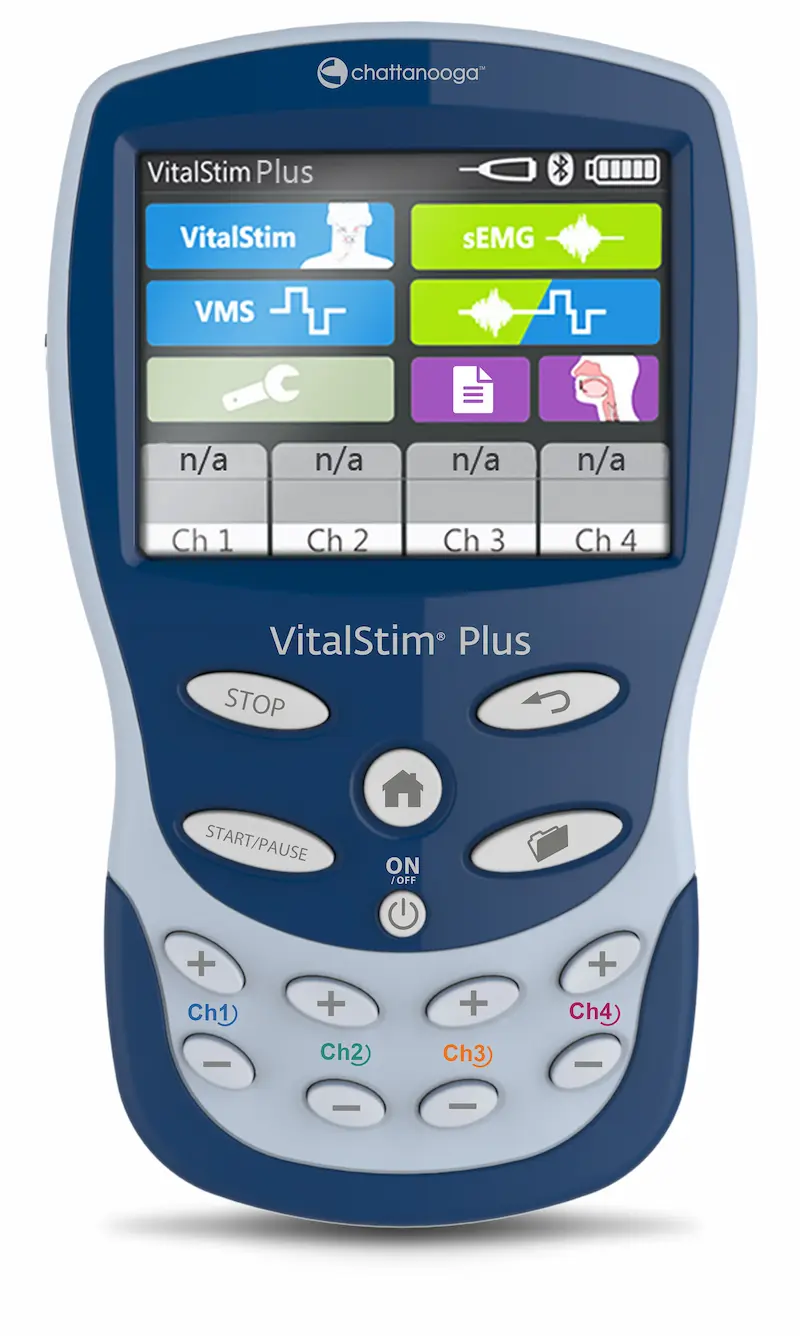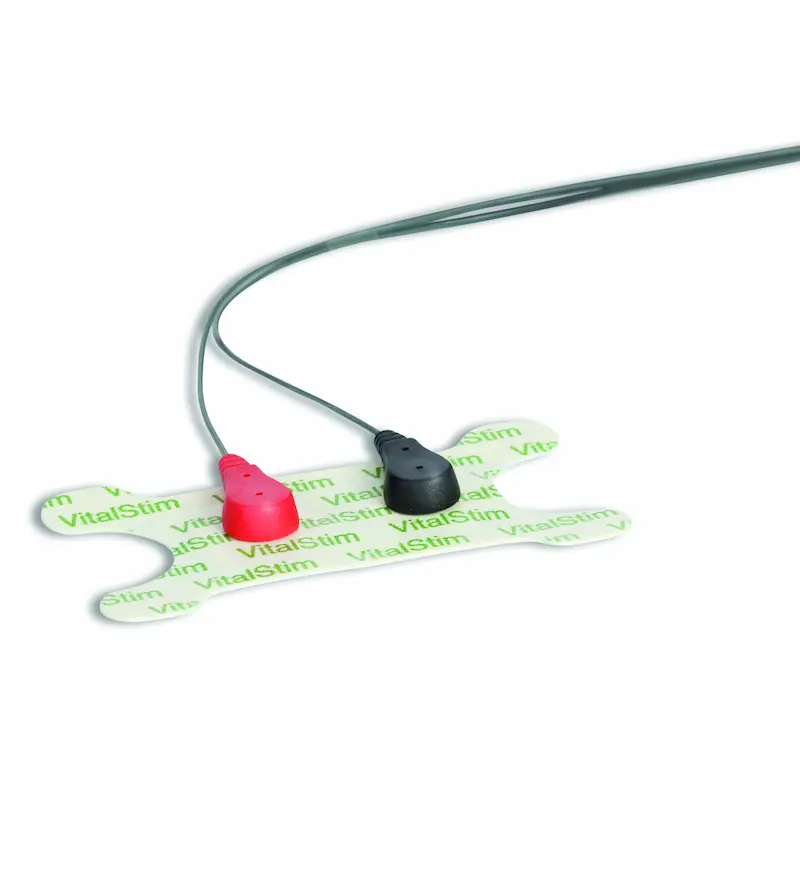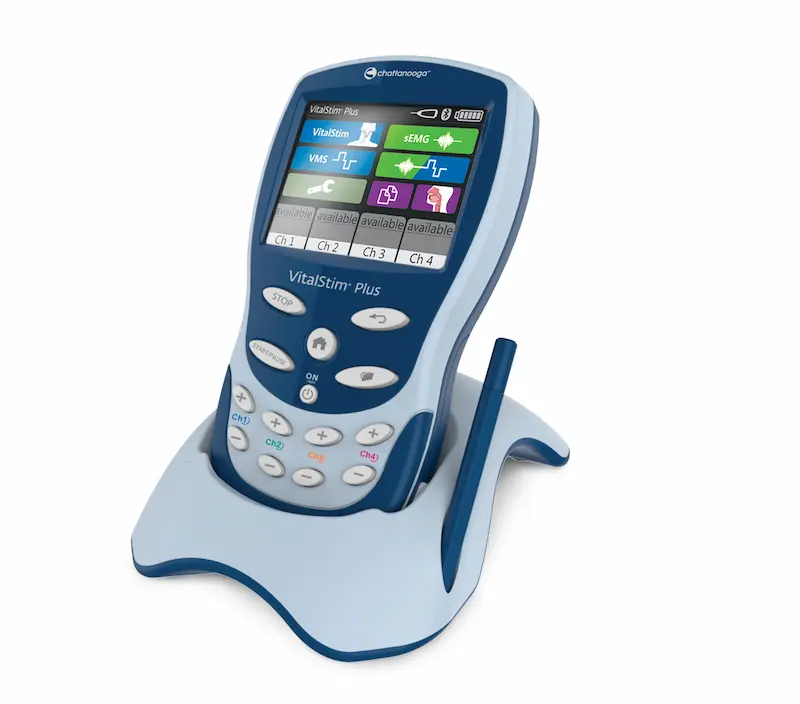SYMPTOMS
In addition to difficulty swallowing, Dysphagia can cause additional discomfort, and people suffering from Dysphagia may show the following signs and symptoms:
- Long time to swallow
- Altered voice, may sound wet
- Rattling breath
- Slurred voice
- Often getting food and drink "wrong in the throat"
- Food residues left in the mouth
- Frequent respiratory infections
- Weight loss
VitalStim is used at all stages of the rehabilitation phase. The method is used in hospitals, municipalities and specialised rehabilitation centres. In hospitals, the method is widely used, from when the patient is in the intensive care unit to when they are moved to further rehabilitation. VitalStim is used when the patient has been discharged from the hospital and is to continue his or her rehabilitation course. VitalStim is used for both adults and children. There are also few private occupational therapists who offer treatment with VitalStim.


How does it work?
VitalStim Plus neuromuscular electrical stimulation helps recruit and re-educate muscles in the process of swallowing.
The VitalStim® Therapy System is an adjunctive modality to traditional exercise that unites the power of electrical stimulation with the benefits of swallowing exercises. Combining VitalStim and traditional therapy allows clinicians to accelerate strengthening, restore function, and help the brain remap the swallow. Research supports the combination of these therapies to improve treatment outcomes.
Under the guidance of a clinician, patients partner in an interactive therapy that aids muscle strengthening to rehabilitate swallowing. sEMG biofeedback helps to increase effort and duration of swallowing attempts and to improve coordination. It also offers the potential for objective evaluation of swallowing function and patterns.2
Benefits of VitalStim Therapy
Vitalstim Treatment
The VitalStim waveform is delivered in Co-Contraction Mode. Up to four separate channels deliver stimulation concurrently and pause at the same time. This allows for the stimulation of multiple muscle groups simultaneously.
VMS Treatment
Customise your treatment protocol by adjusting the parameters of your choice, such as Phase Duration, Frequency, and work and Rest Time.
VMS treatment offers even more flexibility by allowing you to sequence the stimulation in the various channels to more closely match the natural swallowing sequence.

sEMG Treatment
Electrical signals in the muscle are measured and displayed on a screen and are amplified into sounds that the patient can hear. This feedback increases patient effort and participation, and provides the data and documentation required to measure patient outcomes and quantify progress.
sEMG + Triggered Stim
The patient initiates the swallowing exercise with the assistance of sEMG biofeedback. When the set threshold is reached, VitalStim Plus will switch to stimulation mode to increase the effort and exercise load. This mode is particularly useful for patients with weak or uncoordinated swallowing.


